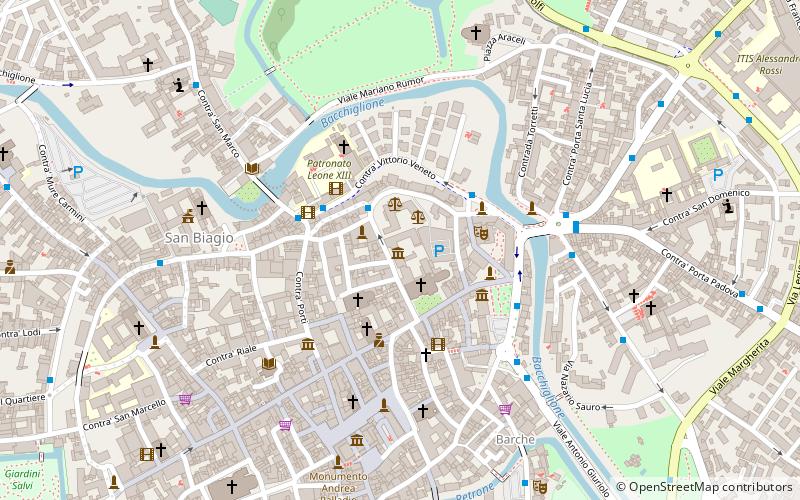Museo Naturalistico Archeologico, Vicenza


Facts and practical information
The Santa Corona Archaeological Nature Museum in Vicenza, opened in 1991, is housed in the convent and cloisters of the former Dominican convent adjacent to the church of Santa Corona in the historic center.
For the naturalistic part, it is located on the second floor and houses numerous fossils, fish and stuffed animals from the territory of Vicenza Province, as well as maps and reproductions of the geological, river and territorial environment of the province.
The historical-archaeological part includes remains of Paleolithic and Neolithic settlements. A sector on the ground floor is devoted to the Paleovenetians: on display there is, in particular, the Stele of Isola Vicentina, with one of the rare inscriptions in Venetian, copper votive foils with processions of men and women, and other metal votive offerings from a Paleovenetian shrine, found in the 1960s during excavations in Piazzetta S. Giacomo in Vicenza.
Along the portico of the inner courtyard is the vast collection of tombstones, memorial stones, milestones, stone sarcophagi, and monuments of the Roman Vicetia, especially from the cemetery area that extended near the Basilica of Saints Felix and Fortunatus, in whose courtyard other tombs are preserved and a small Antiquarium has been set up. The Basilica in fact stands along the Via Postumia on the outskirts of the city. Inside, one room is devoted to the marble decorations and statues of Augustus and the Julio-Claudian dynasty that adorned the Roman theater known as Berga, of which only the foundations remain, covered by other buildings. On the ground floor there are remains of amphorae, photos of the cryptoporticus found in the center of town near the present-day Vicenza Cathedral, and some remains of mosaics, including the large late-antique geometric mosaic from a villa, with five tondi depicting mythological hunting scenes, with Meleager and the boar Calydonius and in the center Bellerophon riding Pegasus kills the Chimera. A section of Roman pavement has been relocated in the courtyard. Also on display near the Church of San Lorenzo is a similar piece of Roman road, perfectly preserved. Other remains of marbles and cippus used as milestones in Roman times are displayed in the courtyard of the nearby Ca d'Oro on Corso Palladio.
Prominent among the private collections donated to the museum is one of Roman sculptures by Vicenza nobleman and archaeologist Girolamo Egidio di Velo from excavations he carried out in the 1800s in Rome. There was an agreed exchange of works with the Vatican Museums in exchange for the large mosaic with athletes from the Baths of Caracalla that he unearthed. There is a remnant of a colossal porphyry column, remnants of statues of river gods, a torso of a resting satyr, a copy from Praxiteles, athletes, a nymph on a rock from the Hellenistic period, deities, as well as two valuable portraits, one of which can be attributed to the Antonine period, perhaps Faustina major.
Finally, there are the rooms with the grave goods of the Lombards.
The municipal museum system also includes the nearby civic art gallery in Palazzo Chiericati and the Museum of the Risorgimento and Resistance at Monte Berico as well as the adjacent Church of Santa Corona.
Museo Naturalistico Archeologico – popular in the area (distance from the attraction)
Nearby attractions include: Palazzo Chiericati, Palazzo Porto, Palazzo Barbaran da Porto, Palazzo del Capitaniato.
Frequently Asked Questions (FAQ)
When is Museo Naturalistico Archeologico open?
- Monday closed
- Tuesday 9 am - 5 pm
- Wednesday 9 am - 5 pm
- Thursday 9 am - 5 pm
- Friday 9 am - 5 pm
- Saturday 9 am - 5 pm
- Sunday 9 am - 5 pm
Which popular attractions are close to Museo Naturalistico Archeologico?
How to get to Museo Naturalistico Archeologico by public transport?
Bus
- Patronato Leone XIII • Lines: 1, 2, 7 (3 min walk)
- Via Giuriolo • Lines: E47 (5 min walk)
Train
- Vicenza (17 min walk)
- Anconetta (38 min walk)











